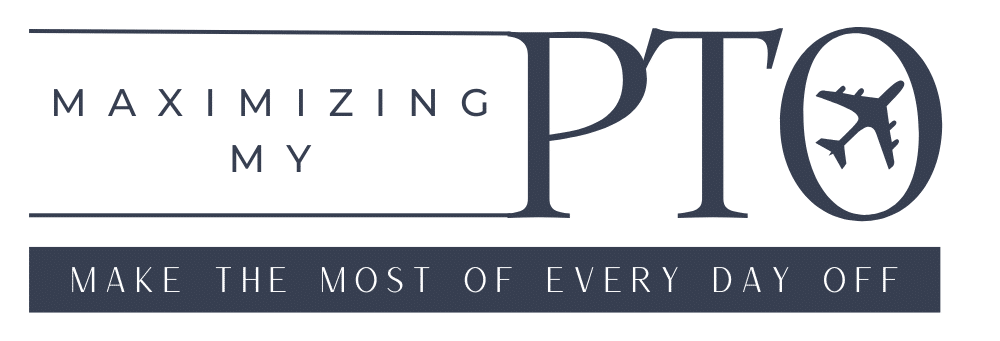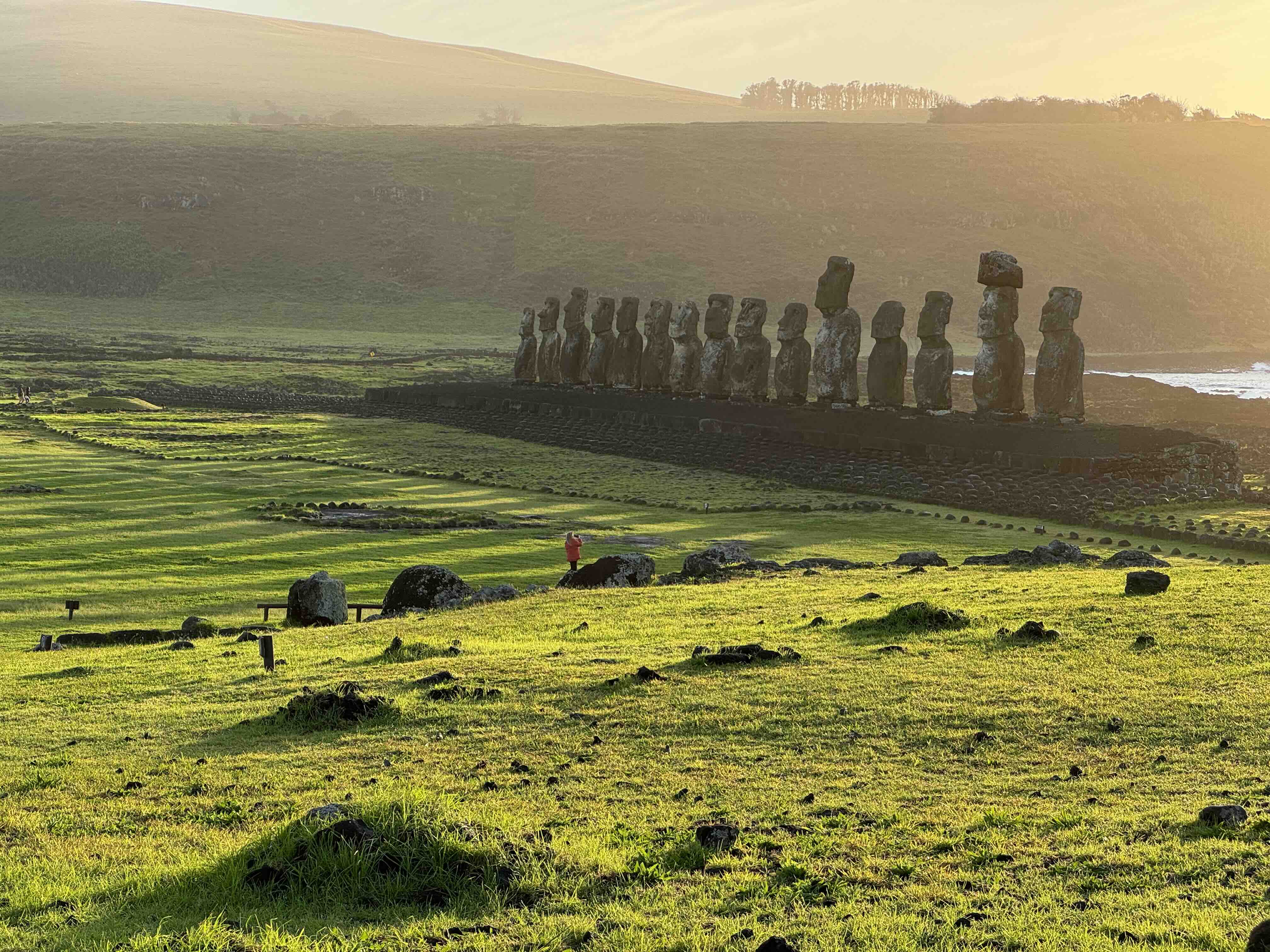Easter Island in 3 Days – How to See this Mythic Place
Easter Island (also known as Rapa Nui or Isla de Pascua) is a remote corner of the Polynesian Triangle that almost didn’t feel real until I got to see it for myself. The island is only 63 square miles, formed from 3 ancient volcanoes, making it small enough to see in just a couple of days. I visited Easter Island over Labor Day weekend and covered nearly the entire island in those 3 quick days. If you’re considering a trip, this guide will be perfect for showing you how to explore. If Easter Island isn’t on your bucket list yet, I hope to change your mind!
This post may contain affiliate links, which means I’ll receive a commission if you purchase through my link, at no extra cost to you.
How to Get to Easter Island
There are 2 ways to get to Easter Island – by plane or by cruise ship. For the purposes of this article, I’m going to focus on the plane option, as that is available year-round and allows you more control over your itinerary.
Currently, LATAM is the only airline to operate flights to Easter Island and you can only get there from Santiago, Chile. Prior to the pandemic, there was also a route from Tahiti, and there are rumors that this route will be returning soon.
Coming from Chicago, my husband and I were able to visit Easter Island over Labor Day weekend without taking any PTO. Here was our itinerary:
- Wednesday – evening flight from Chicago to NYC
- Thursday – work from NYC, evening red eye from JFK to SCL
- Friday – work remotely from Santiago
- Saturday – fly to Easter Island
- Sunday – Easter Island
- Monday (Labor Day) – Easter Island, fly back to Santiago in the afternoon, red eye flight from SCL to MIA
- Tuesday – work remotely from Miami, evening flight to Chicago
We booked our red eyes on LATAM with Avios points through British Airways’ website. Our flights between Easter Island and Santiago were paid in cash.
Travel Hack
LATAM flights are cheaper on the Chilean version of the website than the American one. The site is only in Spanish, but Google Translate can help you navigate if you need. I saved hundreds of dollars with this trick! (Click here to access)
When arriving in Chile, you’ll need to show proof of a completed SAG Affidavit form (click here to access it) to the officer at the airport. It’s basically a customs declaration. You can fill it out online within 2 days of your flight or once you land. No need to print it out – just have it on your phone.
Santiago (SCL) Airport Tip
Prior to your flight to Easter Island, you need to fill out the Rapa Nui Entry Form (click here to access it). You’ll be sent an email from the Provincial Government of Rapa Nui. If you can, I recommend printing it out to show the security officer, but at the very least have saved on your phone for offline use.
You’ll also want to print out a copy of your hotel and flight confirmation emails to show proof of accommodations and return tickets. I’d read they could ask for proof of funds (ex. bank statements), so I had those too but didn’t need them.
When you arrive at the Santiago airport for your flight to Easter Island, you’ll want to go to the domestic terminal and then look for the LATAM check in desk specifically for Easter Island/Rapa Nui/Isla de Pascua if you’re checking a bag. If not, you can skip this step.
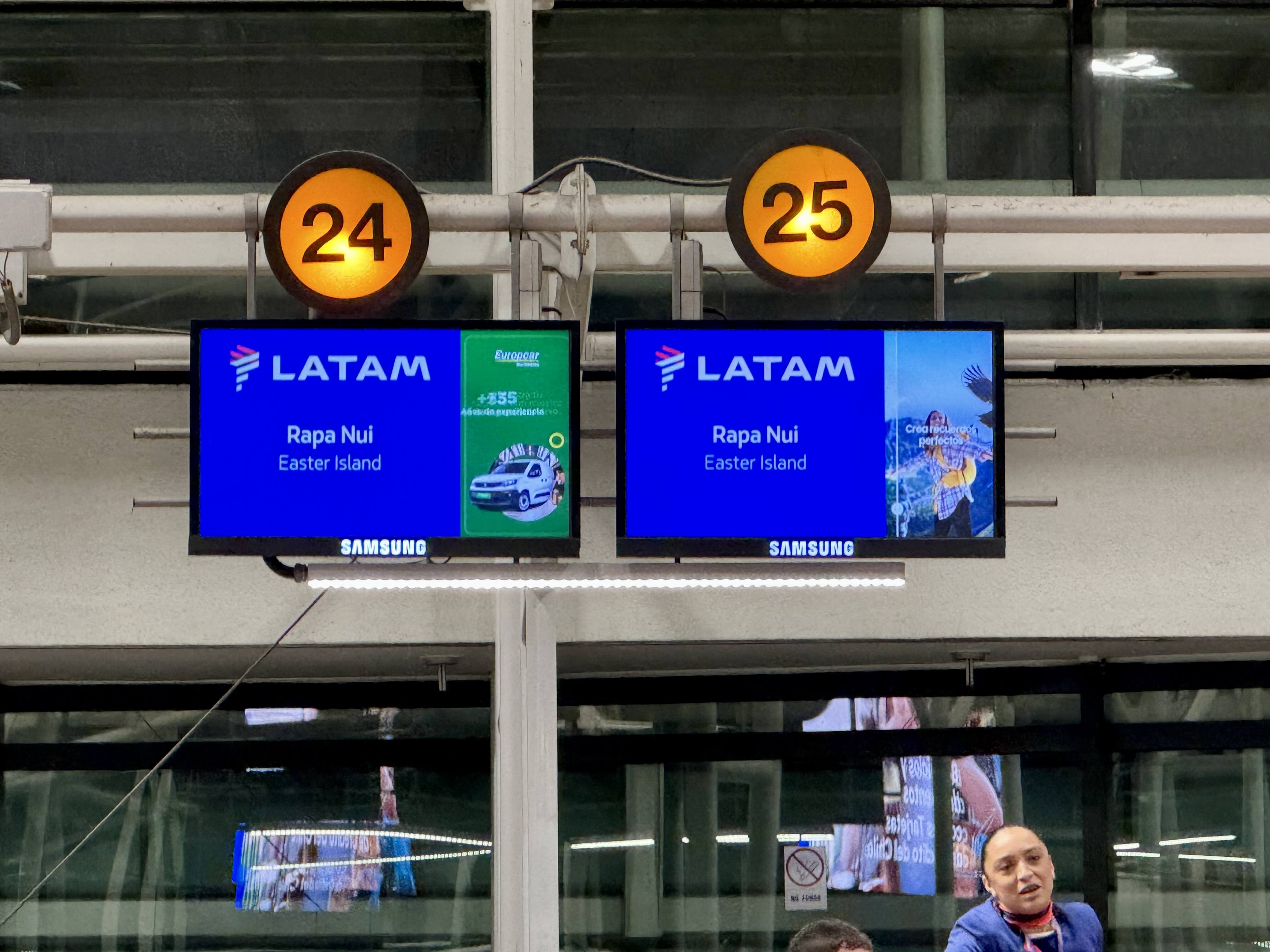
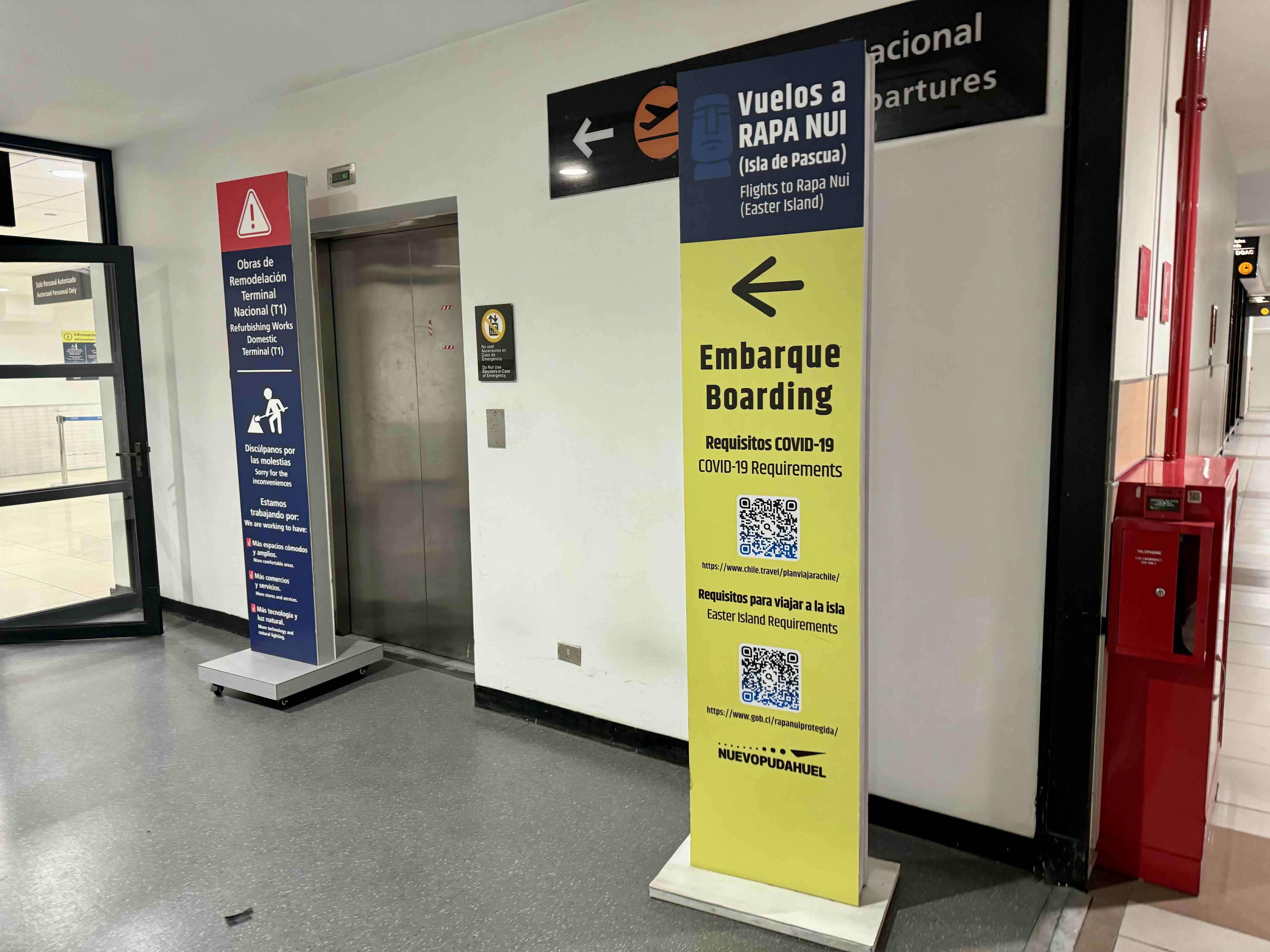
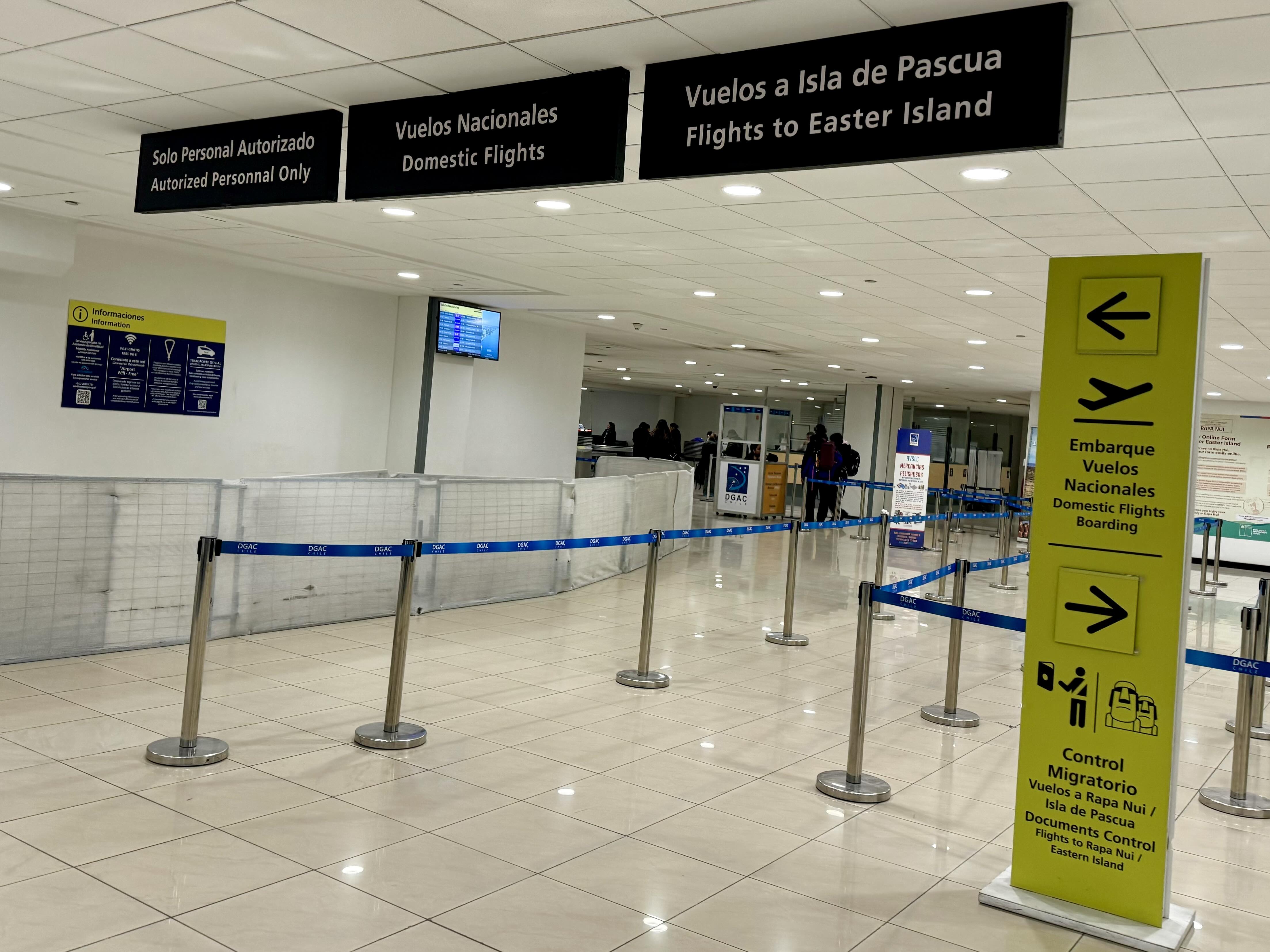
There is a specific security checkpoint for Easter Island flights, so you’ll need to go down a level from the check in desks and follow signs for Easter Island/Rapa Nui security. The signs have outdated Covid information on them – at the time of writing this in 2024, there are no Covid restrictions or testing requirements.
Easter Island (IPC) Airport Tip
The IPC airport is very small, but you still need to arrive with plenty of time before your flight because all bags must go through an initial screening before you go through the regular security line. You are not allowed to bring produce and other food products back to the mainland, along with your typical restricted items.
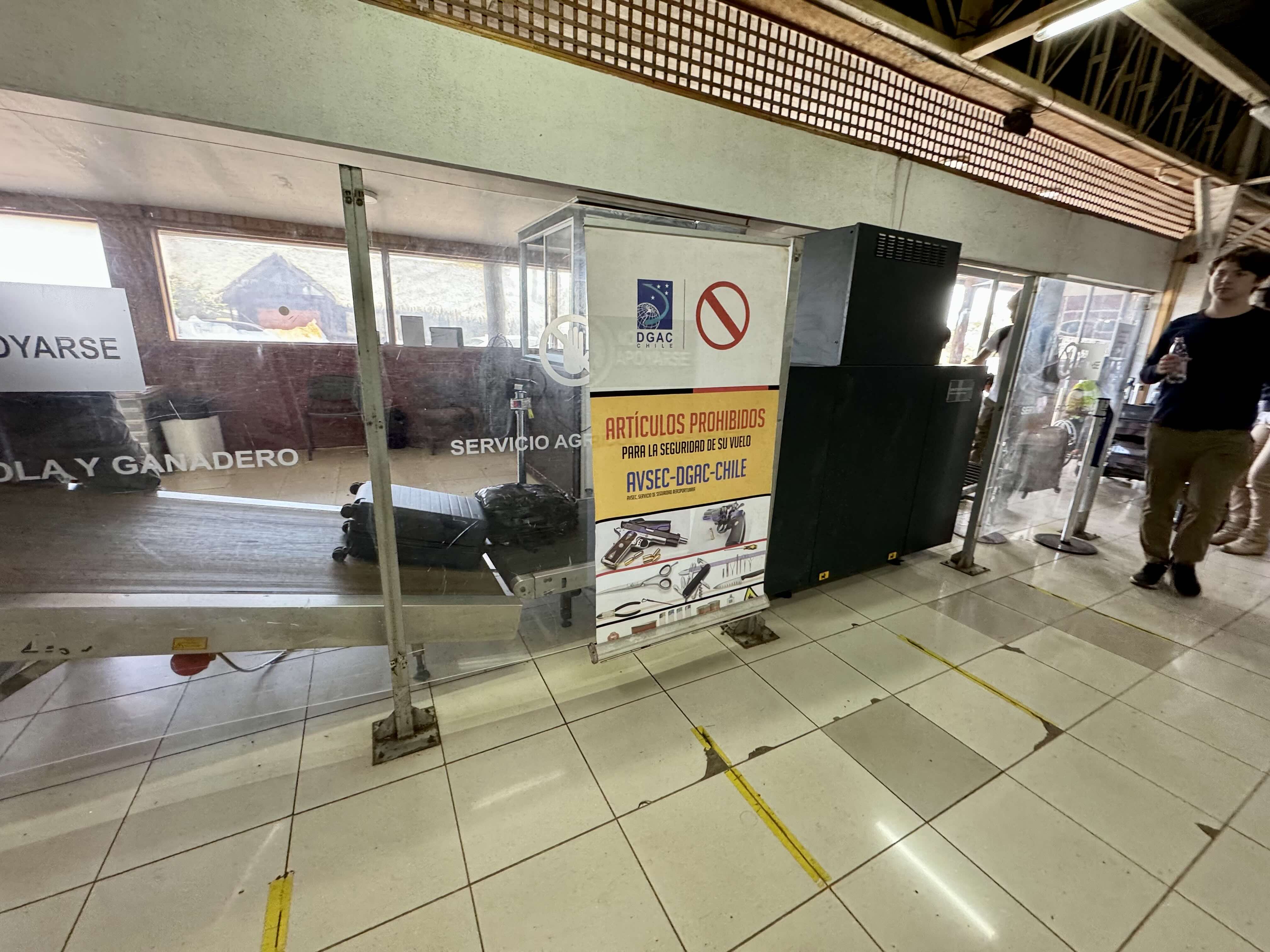
Fun fact: the IPC airport runway is one of the longest in the world because it was built as an emergency landing spot for the space shuttle!
Where to Stay on Easter Island
While you won’t find any large-scale hotel chains and resorts on Easter Island, there are still plenty of great options when it comes to places to stay. From budget accommodations to luxury digs, there’s something for everyone here.
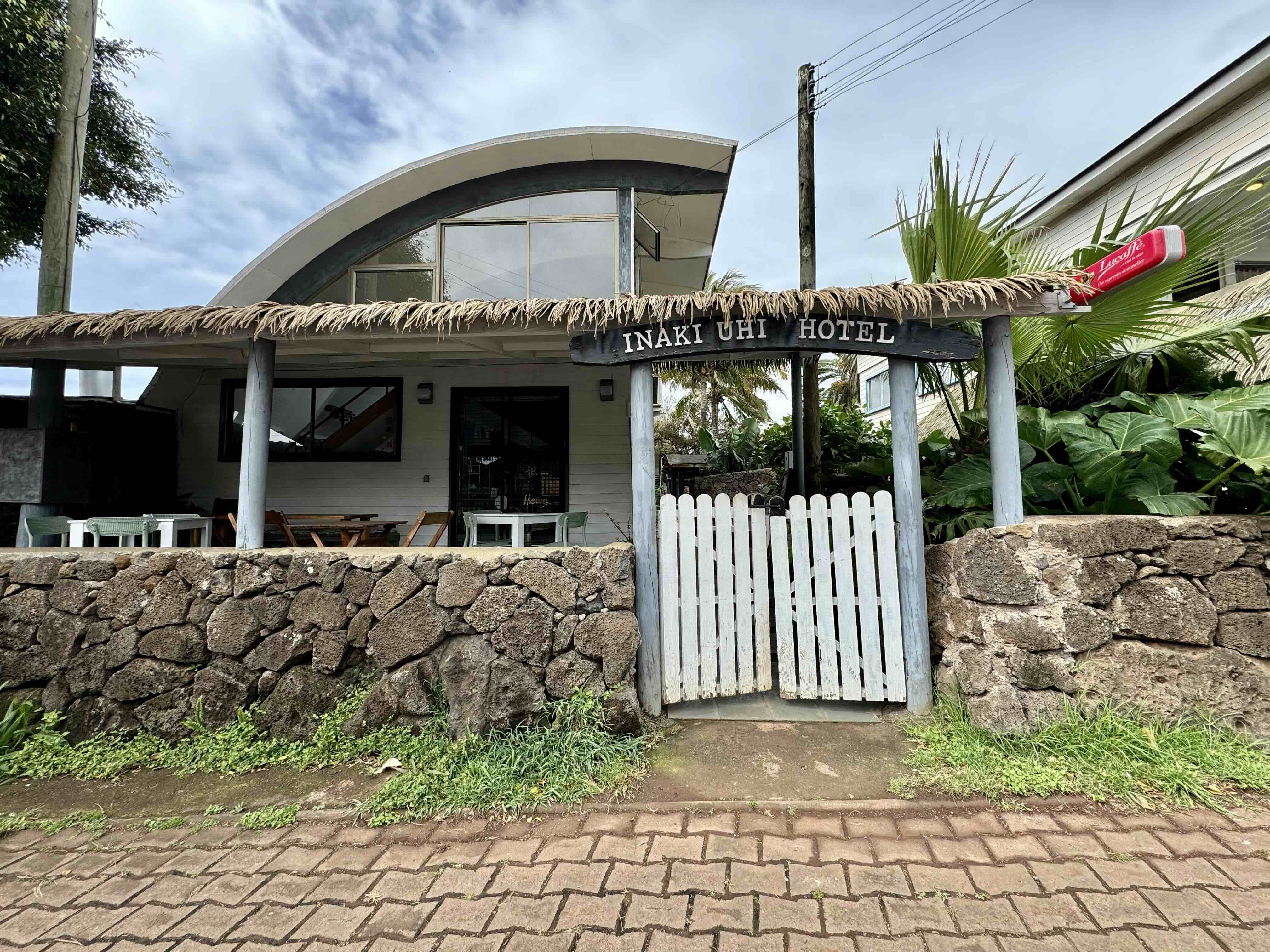
We stayed at Inaki Uhi Hotel which was perfectly situated right in the center of town, making it an easy walk to restaurants, the beach, a grocery store, souvenir shops, etc. This hotel is very basic but was all that we needed for 2 nights on the island. The Wi-Fi worked well, even during a rain storm. I particularly liked that there was air conditioning and a clean, modern bathroom. Also, the included breakfast was a big highlight, featuring a buffet with local foods and eggs & bacon made to order.
If you’re looking for more upscale options, Nayara Hangaroa is the best of the best on Easter Island. It features a pool & hot tub, ocean views, and free bikes to get around. You can also book excursions directly through them and with their “Discover” and “Full Experience” options, Rapa Nui National Park passes are included.
Here are some other great mid-range options:
- Hare Nua Boutique Hotel (right in town, pool)
- Altiplanico Rapa Nui (pool, more secluded)
- Hotel Hare Uta (pool, spa)
- Hotel Boutique La Perouse (beachfront)
Just about every hotel on the island will include free airport pickup/drop-off.
How to Get Around Easter Island
The town of Hanga Roa and very small and walkable. If you want to go further, you can rent bikes, ATVs/UTVs, or cars to get around the island. There was a rental shop right in town just down the street from our hotel.
We didn’t need to rent a vehicle because we hired a guide to show us the island, so he took us around in his car. In town, we just walked everywhere.
How to See Easter Island in 3 Days
First, I should clarify that 3 days isn’t really 3 days when you factor in flight timing. We didn’t land until 12:45 on Saturday and left for the airport around 12:30PM on Monday. We were really only there for 48 hours or 2 half days + 1 full day total.
Rapa Nui National Park Ticket
Most of the island is part of Rapa Nui National Park and you need a national park ticket to access the sites. The ticket is valid for 10 days from the chosen start date (not the date of purchase) and you should always carry it with you. Ticket prices for foreign visitors (non-Chileans) are as follows:
- $80 USD for adults and children 13+
- $40 USD for children 7-12
- Free for children under 7
It is possible to purchase your ticket on the island, but it’s much easier to do it online in advance (click here to purchase tickets).
Also, since Easter Island reopened to tourists in 2022 post-pandemic, it’s been a requirement for tourists to visit certain sites with a local guide. This is partly to prevent tourists from misbehaving at the historical sites. You can find a guide through a tourist agency, the database of accredited guides, or tour booking sites like GetYourGuide, Viator, and TripAdvisor.
Green Island Tours
The requirement for a local guide didn’t bother me because I knew I wanted someone knowledgeable about the history of the island to show me around. We booked the “2 Half Days + 1 Full Day” private tour package with Green Island Tours, and it was the perfect way to see the island in such a short time! Our guide Yoyo took us around the island in his car for 3 incredible days.
Day 1 Itinerary
We landed in Easter Island at 12:45PM and a driver from our hotel was waiting for us with leis. Our hotel was only a 5-minute drive away, but he took a couple quick detours to point out restaurants and other notable spots.
Our tour didn’t start until 3PM, so we checked into our hotel and walked up the street to Umu Pae for lunch. I cannot recommend their empanadas and ceviche enough. The ceviche uses fresh fish caught that day!
After Yoyo picked us up, we headed to Orongo on the southern tip of the island. There we got to see the crater formed form an extinct volcano and the remains of an ancient village where the storied Birdman competitions took place centuries ago. We also got to see our first moai (the Easter Island head statues), but we saw even more on day 2!
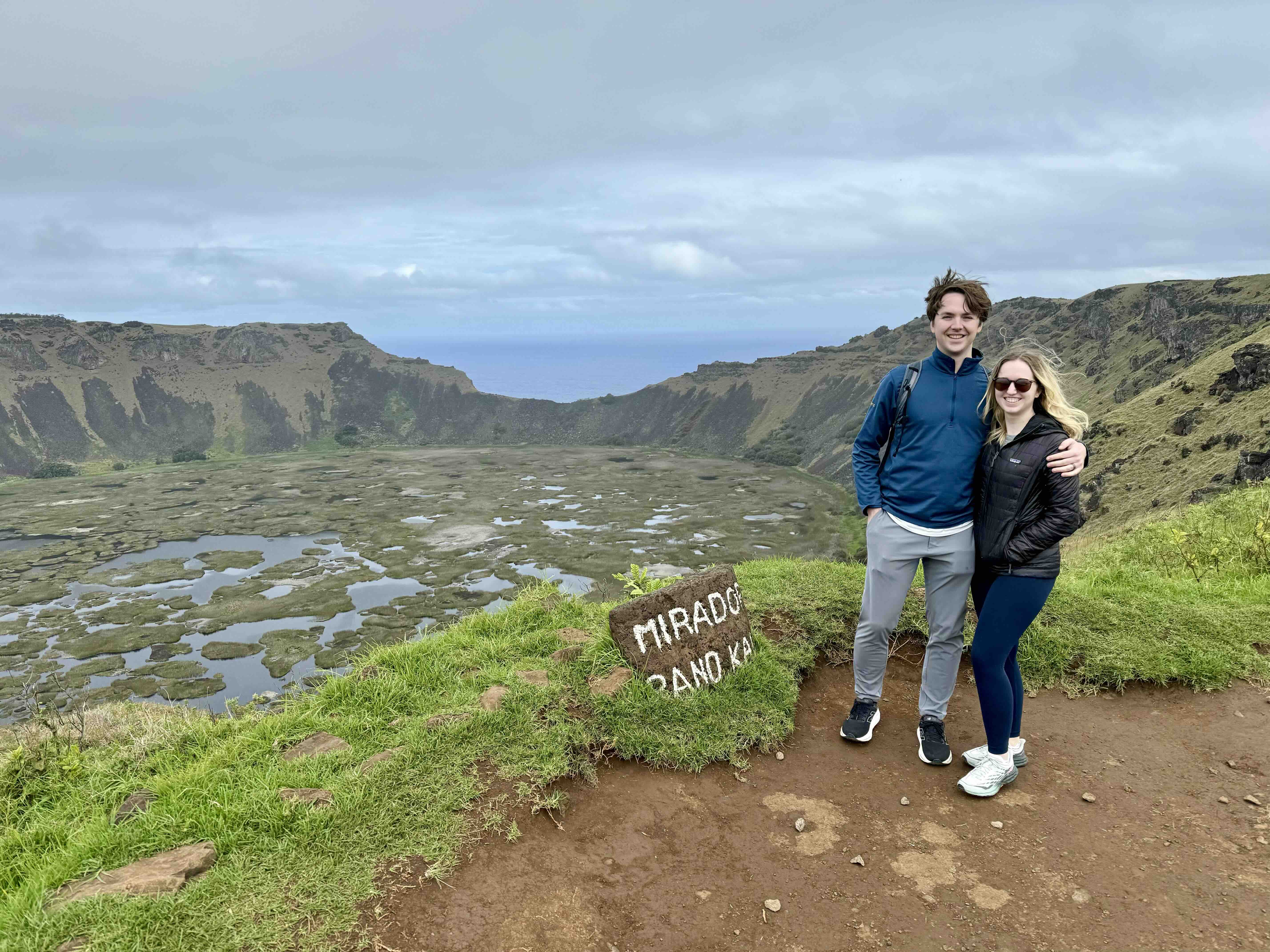
Our tour ended back at our hotel around 5:45PM and we walked to Topa Ra’a for dinner. It has views over the ocean and the best pisco sours I’ve ever tasted!
Day 2 Itinerary
After eating a delicious breakfast at our hotel, Yoyo picked us up and we set out to see the most iconic sites on Easter Island. On our way though, we stopped and picked guava from a tree on the side of the road – yum!
Our first site was Anakena, which features a series of Moai on a beautiful beach surrounded by Tahitian palm trees. It truly felt like paradise. I was kicking myself for not packing my swimsuit because this was the perfect spot for a dip. Note: Anakena beach is one of the only places that you can access without a guide.
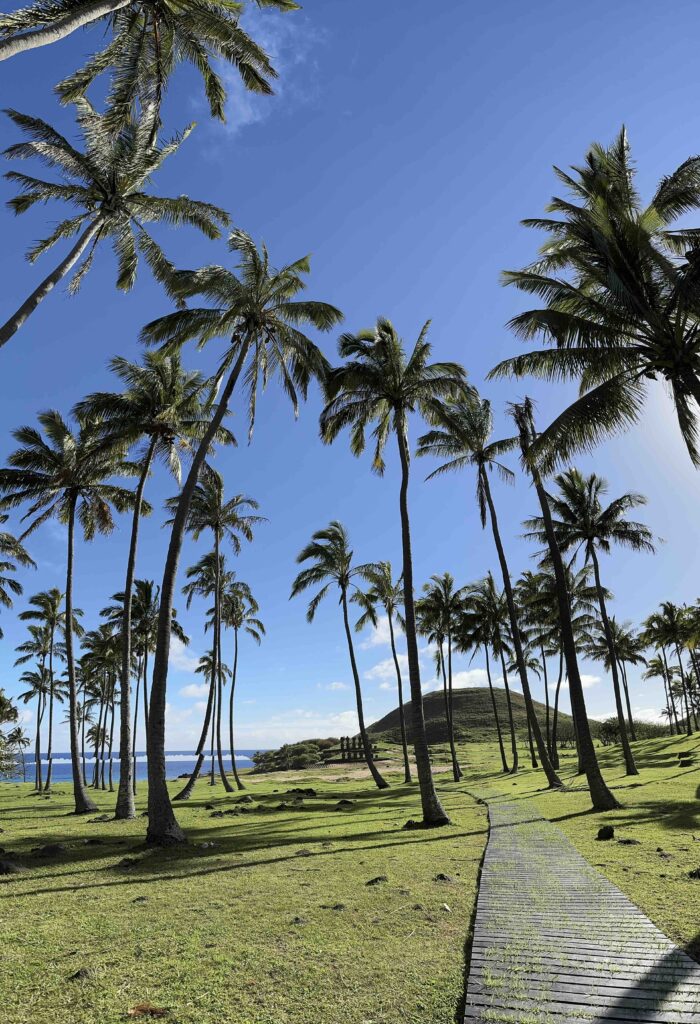
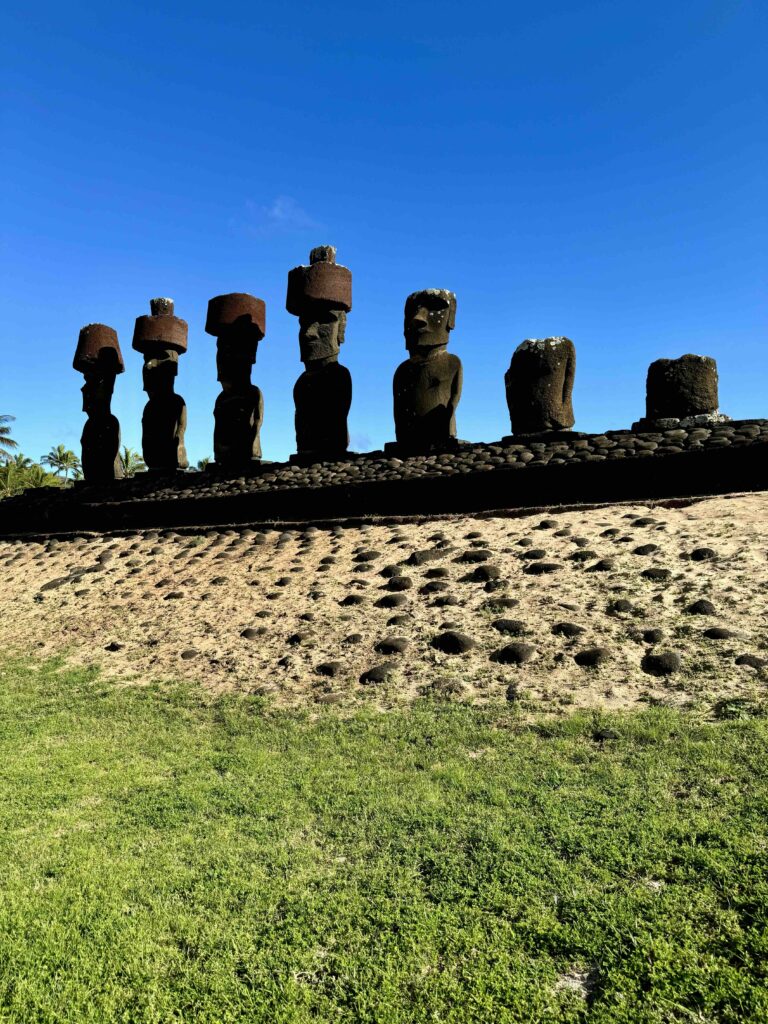
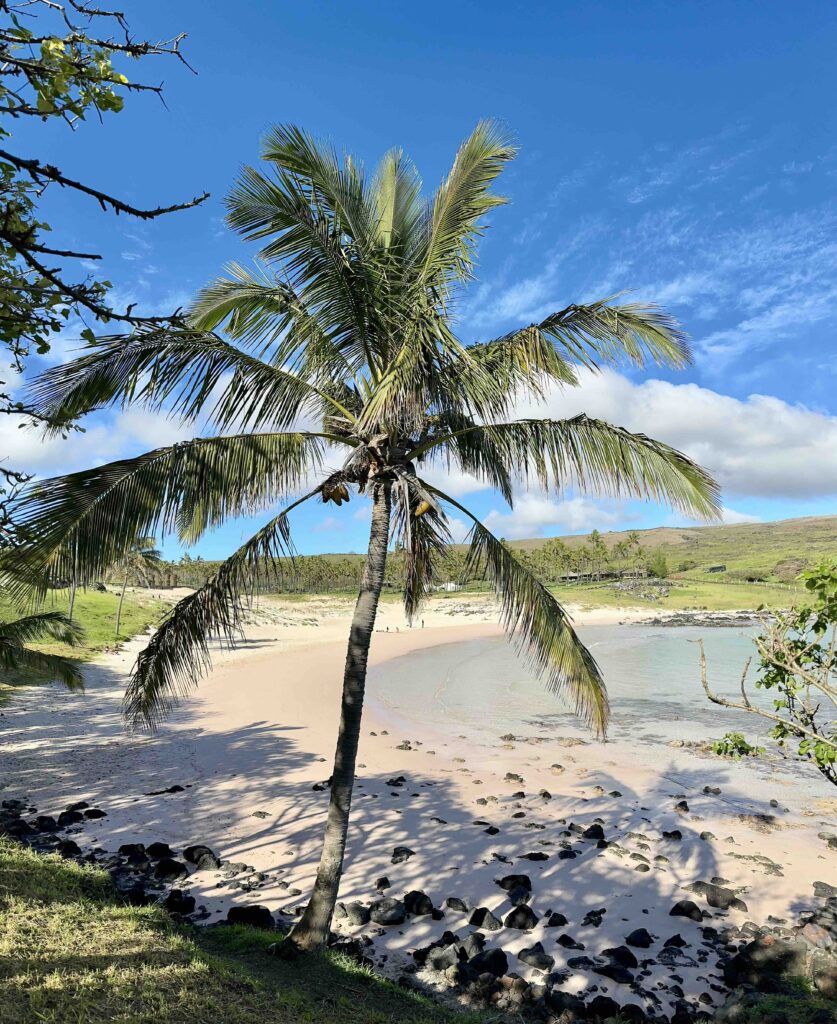
From there we made a quick stop at Piro Kira (the “sacred navel”) before heading to Rano Raraku, the quarry where all of the moai were carved. There are still dozens of moai scattered throughout the quarry because production abruptly stopped when a civil war broke out around 1600CE.
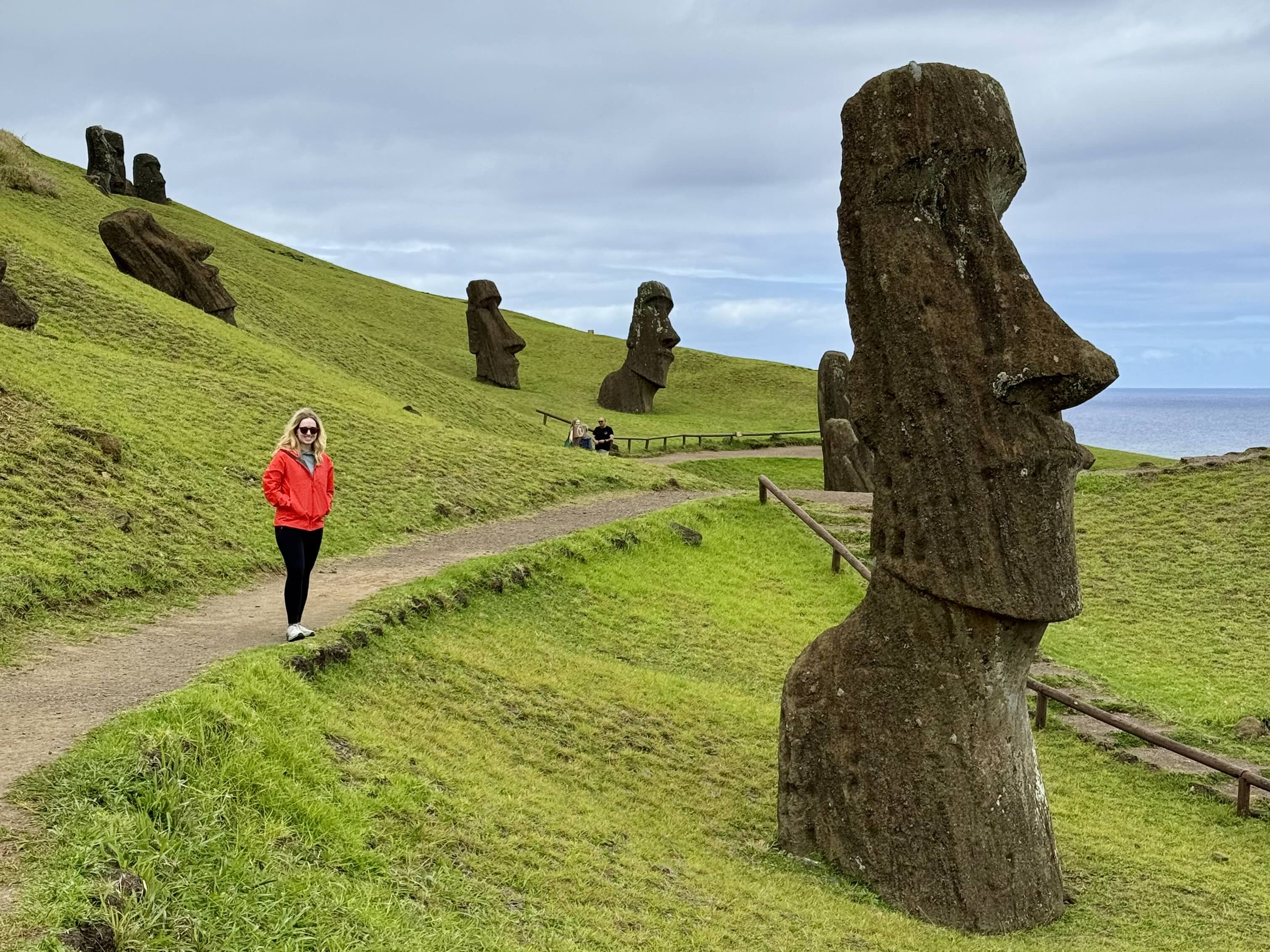
Lunch took place at the foot of the quarry at Restaurante Julio Calderon Chave and then we headed to Tongariki, possibly the most iconic spot on the island.
I learned that every moai on the island had been toppled over during the civil war and many of them broke. The ones we see standing today at places like Anakena, Tongariki, etc. were all raised up and put back together by archeologists within the last 30-60 years.
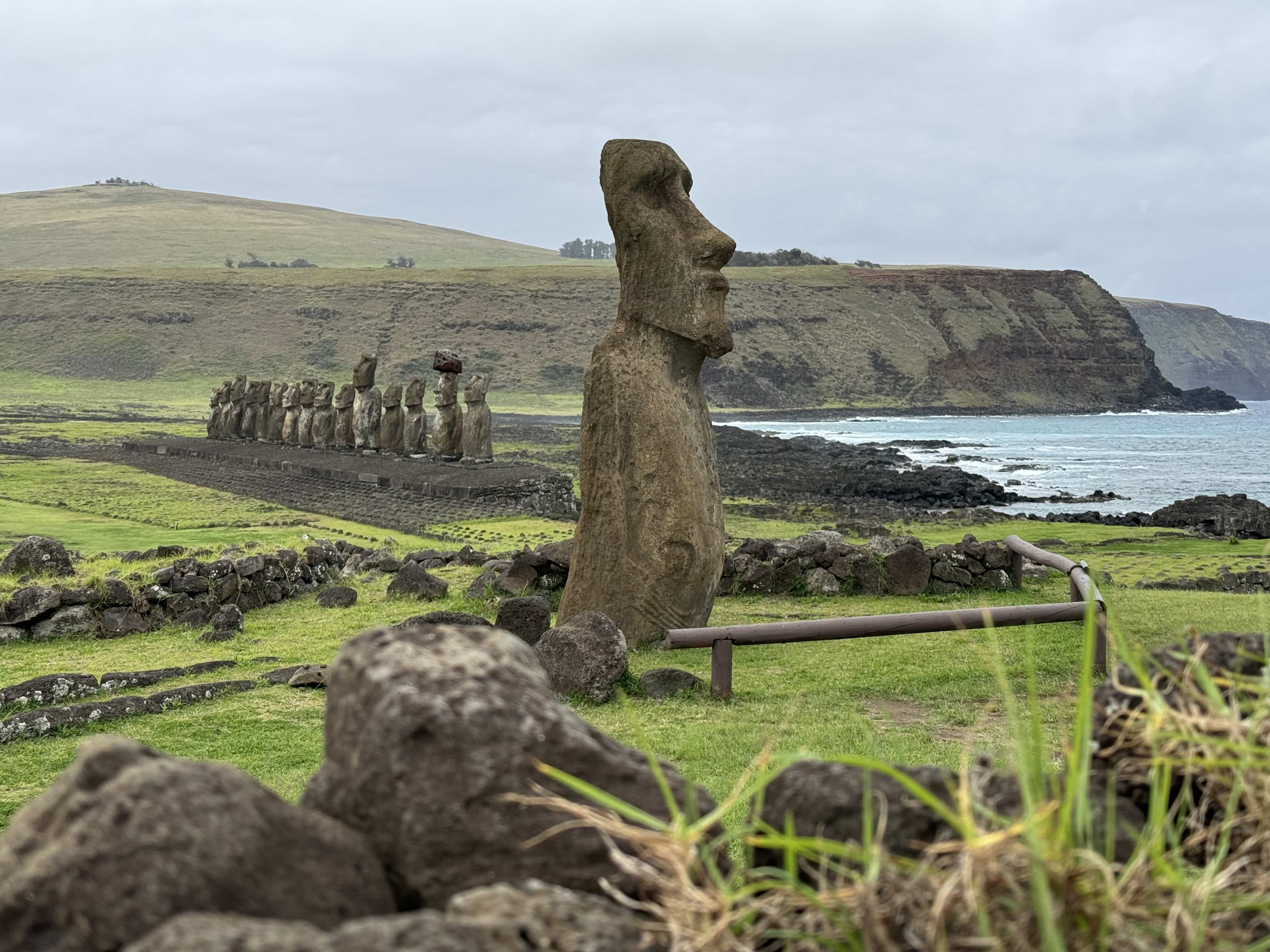
In between all these sites were lots of little stops at various moai platform ruins. They are truly everywhere throughout the island.
After we got back to our hotel, it started raining and many of the restaurants lost power. There was a grocery store nearby that had power, so we just picked up some charcuterie fixings for dinner in our hotel room.
We’d pre-booked a stargazing tour through Green Island Tours, but it was cancelled due to the rain and we were quickly refunded.
Day 3 Itinerary
On our last day in Easter Island, we had an early morning wakeup call. Yoyo picked us up at 6AM to take us back to Tongariki to see the sunrise behind the moai platform. Thankfully the rain had stopped and the clouds had broken up enough for an amazing sunrise. Yoyo even brought us cookies and tea to snack on while we watched.

The sun rises at different angles behind Tongariki throughout the year. Around December 21st is when it’s most directly behind the statues. Regardless of the day, the sunrise is well worth losing a little sleep!
The Green Island Tours website had said we’d go back to our hotel for breakfast, but that didn’t happen. Instead, we went straight into the rest of our half day tour, exploring Puna Pau (the top knot quarry), Ahu Akivi (7 moai statues), and lava tubes that were used as protection and homes during the civil war.
We had just enough time after our tour to grab lunch and head to the beach to spot the sea turtles in the cove before heading to the airport. At the visitor center nearby, you can stamp your passport with a souvenir Rapa Nui stamp, but we stamped our national park tickets instead.
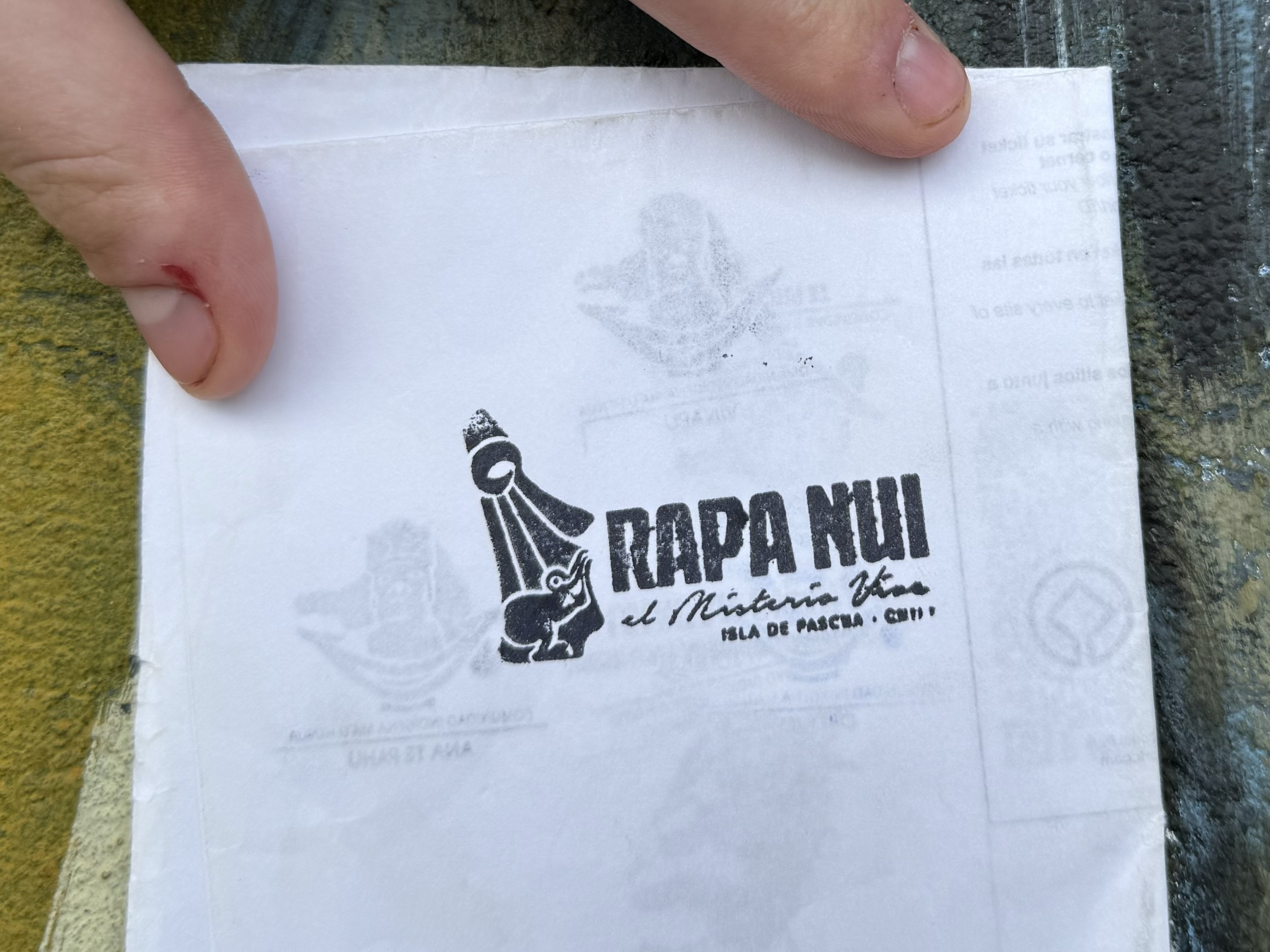
FAQ
What time of year should you visit Easter Island?
Easter Island is a year-round destination, though the peak tourist season is during the summer (December – March in the southern hemisphere). The cruise ships only come around this time and hotel prices are higher. We had an incredible time visiting in September and preferred the cooler temperatures. We also benefited from lower crowds – in fact we had most sites all to ourselves!
Do I need cash on Easter Island?
90% of places here take debit/credit and there’s no tax on the island! We only used cash to tip our tour guide.
Are there ATMs on Easter Island?
Yes, there are 3 ATMs on the island – one at the airport and 2 in town at Banco Santander and Banco Estado. However, we found it easier to get cash at an ATM in Santiago before we arrived.
Is there cell service and/or Wi-Fi?
Cell service is limited, but it was available more than I expected. It’s especially strong near the airport.
Wi-Fi was available at our hotel and at several restaurants. Outside of the town of Hanga Roa, don’t expect to have any internet access.
How many days do you need to see Easter Island?
While we saw most of Easter Island in 3 days/2 nights, I wish we could have stayed 1-2 more nights just to have more downtime to relax and explore at a more leisurely pace. I wouldn’t have wanted any less time on the island!
What country is Easter Island part of?
Easter Island is part of Chile. Spanish is the primary language spoken and the Chilean Peso is the currency.
Is Easter Island safe?
Incredibly so! Easter Island is so safe that locals routinely leave their keys in their car. They also don’t typically wear seat belts because no one can drive fast on the roads (we still wore ours out of habit).
There are also no snakes or other dangerous animals on the island. The dogs in town are allowed to roam free, so be warned they’ll probably follow you around!
Why is Easter Island called Easter Island?
Easter Island was given this name because the Dutch explorers landed on the island on Easter Day in April 1722. There were of course already native Polyensians on the island, so the Dutch didn’t “discover” the island, but the name has stuck in the western world.
Why does Easter Island have 3 names?
Easter Island is the most common name for the island in the US. Isla de Pascua is the Spanish translation of “Easter Island.” Rapa Nui is the native name for the island and also the name of the native people on the island. All are acceptable.
What’s the weather like on Easter Island?
The island is sub-tropical, so it’s not as hot and humid as places like Hawaii. The average high ranges from about 68 degrees Fahrenheit in the winter to 79 degrees in the summer. The weather can also shift a lot throughout the day and weather forecasts aren’t always reliable, so bring layers and a rain coat!
What should I pack for Easter Island?
As mentioned, layers are important for the variable weather conditions. The most important thing to keep in mind when packing is that there are limited resources on the island compared to major cities on land, so try to pack everything you might need (medications, toiletries, etc.).
What else is there to do on Easter Island?
Surfing is one of the most popular activities on the island. If you have free time, you can rent a board and go out on the water! Alternatively, you can go snorkeling or scuba diving. There’s a replica moai statue in the ocean (leftover from a movie) that’s a popular spot for divers!
Final Thoughts – Is Easter Island Worth Visiting?
YES! Even if you only have 3 days on Easter Island, it’s absolutely worthwhile. All the flights and travel to get to Easter Island is well worth it. It’s a truly unique and special corner of the world. The people are incredibly friendly, the food was shockingly good, and the history is unlike anything else.
Don’t forget to pin this post for future planning!
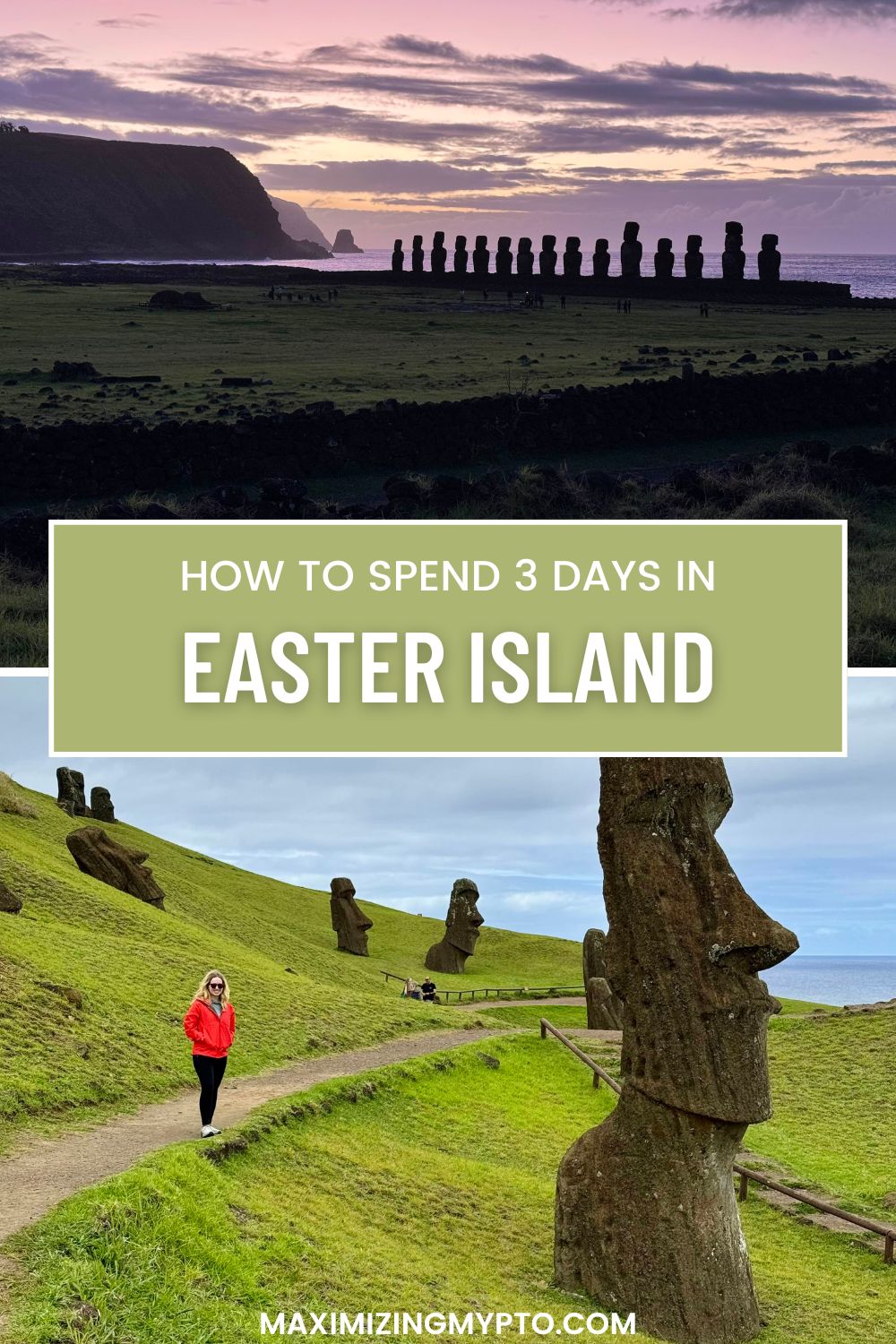
You may also like:
